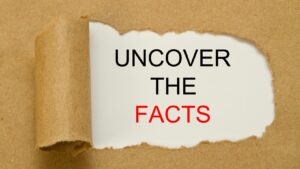Definition of Records Management
Records Management refers to the professional practice of managing the records of an organization throughout their life cycle. This cycle encompasses the period from the inception of a file, all the way to its eventual disposal. This management includes identifying, classifying, storing, securing, retrieving, tracking, and even destroying records when necessary. Records can be both paper and electronic, which underscores the increasing prominence of digital record management in today’s era.
This systematized process ensures that information is easily accessible, contributing to the overall effectiveness and efficiency of an organization. Additionally, it aids in decision making, serves as a legal backbone in the event of disputes, and aids in preserving the organization’s history.
The Basics of Records Management
Investing time in understanding the basics of records management is a key step towards acing your Records Management 101 course exam. In this section, we’ll lay down the groundwork for your insight into this essential administrative activity.
Record Types
Before getting into any detailed record management practices, it’s crucial to have a clear understanding of record types. These types offer a basis for the classification, storing, and eventual disposal of the records. Basically, records fall under two main types: Active and Inactive.
- Active Records are those currently in use and regularly accessed. These could be client files, project documents, or ongoing legal files.
- Inactive Records, on the other hand, are rarely accessed. Normally, we’d archive these records since they’re no longer needed for daily operations but may be required in the future. These may include completed project documents or old legal files.
Getting this fundamental right will automatically streamline the entire records management process.
Record Lifecycle
A proper understanding of the record lifecycle is key to effective records management. The lifecycle of a record generally consists of the following stages:
- Creation: This happens at the inception of a record—be it an email, document, or any form of data.
- Use and Maintenance: This is when the records are actively being used and maintained.
- Storage: Here, records, primarily inactive, are stored, often in an archive.
- Disposal: The final stage involves the secure and compliant disposal of records no longer needed.
It’s important to note that not all records will go through all these stages. Some may go directly from use to disposal, skipping the storage phase.
Record Classification
Records classification is a core principle of records management. It involves organizing records into categories based on their nature, allowing for efficient indexing, retrieval, and disposal. There are primarily two main methods in record classification.
- Alphabetic Classification: This approach uses alphabetical principles to classify and organize records. It’s simple and ideal for small businesses.
- Numeric Classification: This method uses numeric codes for classification and is beneficial in companies with an extensive volume of records.
Records Management 101 Course Exam
Understanding the fundamentals of records management can clearly streamline the process, but what does it take to truly excel in the Records Management 101 course exam? Let’s delve deeper into the format of the exam, gather some preparation tips, and take a look at a few sample questions to get a feel for what’s in store.
Exam Format
The Records Management 101 exam generally tests your understanding of key principles including record types, the record lifecycle, and record classification. Here’s what you can expect:
- The exam is typically divided into multiple sections each focusing on a specific area of study.
- This format allows for a mix of question types such as multiple choice, true or false, and short answer.
- Some sections may include case studies that put your theoretical knowledge to practical use.
Exam Preparation Tips
Succeeding in the Records Management 101 exam takes more than just understanding the course material, it’s also about knowing how to study effectively and retain the information you learn. Here are some tips:
- Regular review sessions can promote long-term memory retention.
- Practical exercises such as creating your own record types or classifying given records can test your understanding.
- Practice questions or past exam papers can improve your familiarity with the exam format.
Sample Exam Questions
To give you an idea of the types of questions you might encounter, let’s look at a few examples:
- Define and explain the importance of accurate record classification in an organization.
- Discuss how the record lifecycle phases can be integrated into the organizational workflow.
- In a given case study, identify the record types and classify them according to your understanding.
Keep in mind, these are just examples and the actual exam may vary. Nevertheless, being aware of these elements will surely give you a competitive edge while preparing for the Records Management 101 course exam.


